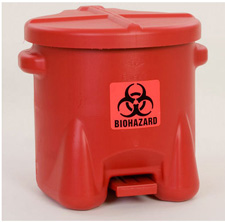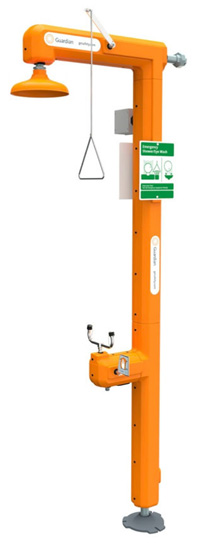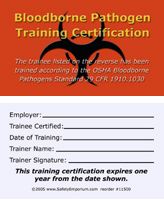| The Home page of ILPI's Safety Data Sheet (SDS) Resource, the leader in SDS information since 1995! | |
| The history and philosophy behind this resource. | |
| A curated collection of books and reference materials concerning Safety Data Sheets and closely related topics. | |
| Paste your plain text SDS into the SDS-Demystifier, and it will be converted into a hypertext-enriched document with links to detailed explanations of each key term. | |
| An extensive list of frequently asked questions about Safety Data Sheets including regulations, content, compliance, and more. | |
| A humorous take on Safety Data Sheet jargon. Fill in the blanks on our entry form to generate a personalized Unsafety Data Sheet to share with your coworkers. | |
| Since 1995, we've maintained this massive curated list of the best places to find Safety Data Sheets on the Internet. | |
| Way more than a glossary, this hypertext-enhanced resource covers hundreds of SDS-related terms and expert knowledge. Each entry includes both the SDS relevance and links to additional authoritative resources. | |
| Archived results of Safety Data Sheet related polls taken by some of our millions of site visitors | |
| You are here! The OSHA regulations behind SDS regulations, including the inspection guidelines and over 400 official interpretations letters under the Hazard Communication Standard | |
| Commercial suppliers of SDS authoring and management software as well as cloud compliance services. | |
| Commercial companies that will create SDS's for your specific needs as well as SDS translation companies. |

Safety signs, banners, and scoreboards? Get yours at Safety Emporium!
| Title: 12/27/1994 - Review of Manual for training personnel engaged in oil spill emergency response. | |
| Record Type: Interpretation | Standard Number: 1910.120; 1910.121; 1910.146; 1910.1200; 1910.1030 |
December 27, 1994
Don A. Alberts, Ph.D.
All Points Associates, Inc.
World-Wide Environmental and Safety Consultant Firm
3309 Peru Center Road
Monroeville, Ohio 44847-9799
Dear Dr. Alberts:
This is in response to your request of September 19, for review of your manual, "Major Oil Spill and Safety Manual," to be used for training personnel engaged in oil spill emergency response and clean-up operations. Although the Occupational Health and Safety Administration (OSHA) does not review, approve or endorse training materials, we are providing information concerning the manual's coverage of pertinent topics.
Before addressing the contents of the manual, it is important to clarify a point in your letter: petroleum products do meet the definition of a hazardous substance in OSHA's Hazardous Waste Operations and Emergency Response (HAZWOPER) standard through their inclusion in the U.S. Department of Transportation (DOT) hazardous materials list (29 CFR 1910.120(a)(3)). Consequently, oil spill clean-up workers and emergency responders are covered by HAZWOPER and must be trained accordingly.
The specific HAZWOPER training requirements that your courses must meet will depend upon whether your trainees perform emergency control and containment only, or whether they engage in "post-emergency response" or clean-up operations. Workers who perform only emergency response control and containment of a spill must be trained according to the requirements of 1910.120(q)(6). Workers engaged in post emergency oil spill clean-up operations, however, must be trained according to 1910.120(q)(11). Furthermore, if post-emergency response clean-up workers do not engage in this work on a recurring basis and are involved in work with a "low magnitude of risk," they may require fewer hours of training, as indicated in OSHA's compliance instruction, CPL 2-2.51. Your "Training Requirements" section on pages 11-8 through 11-10 of your manual suggests that you are aware of these distinctions, but neither your letter nor your manual indicate what training audience(s) you anticipate or what your course(s) would include. As a general recommendation, it would be advisable to know which OSHA regulations apply to the audience(s) you train and to tailor your courses to meet their needs.
In addition to that suggestion, we can offer the following observations:
- Numerical references to OSHA standards are noticeably absent from your manual (e.g. 19 CFR 1910.120 for HAZWOPER, 1910.146 for Confined Spaces, 1910.1200 for Hazard Communication, 1910.1030 for Bloodborne Pathogens). It is important to cite the OSHA regulations in which your attendees will be trained so that both employers and employees are aware that the specific regulations exist and where they can be found.
- The health hazards of chemical dispersants are not addressed. Hazard communication requirements for these substances should be reviewed and included as applicable.
- Respiratory protection does not appear to be addressed in your manual although the requirements of 1910.134 certainly apply to oil spill responders and should be included in health and safety training.
From your prior correspondence with this office, you are probably aware that OSHA does not yet approve training programs. The proposed Accreditation of Training Programs for Hazardous Waste Operations standard (29 CFR 1910.121) is in rule making. This past August, however, OSHA did publish HAZWOPER Training Curriculum Guidelines as a non-mandatory appendix to 29 CFR 1910.120. Emergency responder training is included in these guidelines, published as Appendix E to 1910.120, and a copy is enclosed. You may find this to be a useful checklist for reviewing your curricula against regulatory requirements.
We also suggest that you contact the Coast Guard for assistance with their health and safety training requirements. The Coast Guard can provide, at no charge, a copy of their "Training Reference for Oil Spill Response," published jointly this past August by the Coast Guard, EPA, and the Minerals Management Service. This document cites training requirements, provides decision logic for determining training needs, and presents course outlines and sample lesson plans. You can reach the Coast Guard at the following address and phone number:
Commandant G-MEP-4
Training Preparedness Branch
Marine Environmental Protection Division
U.S. Coast Guard
2100 2nd Street, N.W.
Attn: Ensign Jeanne Reincke
Washington, D.C. 20593
Telephone: (202) 267-2865
We hope this information is useful and encourage your interest in providing effective emergency responder training. Please contact the Office of Health Compliance Assistance at (202) 219-8036 if you need additional assistance.
Sincerely,
John B. Miles, Jr., Director Directorate of Compliance Programs
Enclosure
October 6, 1994
Don A. Alberts, Ph.D.
All Points Associates, Inc.
World-Wide Environmental and Safety Consultant Firm
3309 Peru Center Road
Monroeville, Ohio 44847-9799
Dear Dr. Alberts:
We have received your letter of September 19, addressed to Robert B. Reich, Secretary of Labor. Your letter was forwarded to the Occupational Safety and Health Administration (OSHA) for review of your manual "Major Oil Spill and Safety Manual."
This matter requires further research. We are attempting to respond as expediently as possible, taking into consideration the need for a thorough and responsive reply.
We regret that it will take up to 90 days for us to respond to you. For an update on the status of your inquiry, please feel free to call the Office of Health Compliance Assistance at (202) 219-8036.
Sincerely,
John B. Miles, Jr., Director Directorate of Compliance Programs
September 19, 1994
Mr. Robert Reich
Secretary of Labor
Occupational Safety and Health Administration
U.S. Department of Labor
200 Constitution Avenue N.W.
Washington, D.C. 20210
Dear Mr. Secretary:
We are about to engage in training personnel around the country on the do's and don't's of major oil spills. Having participated in 31 major oil spills, and developed oil spill contingency plans for every port and river in the State of Florida, we feel there is a definite requirement to provide adequate oil spill training to people in advance of a spill. This writer has prepared a Major Oil Spill & Safety Manual that each student will receive as a class work book, and maintain for future references.

Safety Emporium carries biohazardous waste cans, labels, training materials and more...
We feel we have addressed every point, including safety for oil spills, in the aforementioned manual. But we would sincerely appreciate your agency's review and comments on this manual.
While oil spills do not fall under your agencies guidelines as hazardous materials, we feel safety is a major concern. Beach clean up activities, operations in compartments aboard tankers and on barges and safety concerns for deployment of oil boom with boats, and skimmer operations.
Each student will receive three days classroom training, and two days hands on. Safety will be stressed throughout this training. During the beach cleanup on the Tampa Bay Oil Spill last August, there were 114 injuries, illness or accidents on St. Petersburg Beach. The majority of these incidents were directly due to the lack of proper training. As the Safety Coordinator for this cleanup, we established the best safety provisions possible. Yet, accidents, injuries and illness took place. I did make a comprehensive study as to the cause of the large number of, incidents which took place over a three week period, and the result was overwhelming. "LACK OF PROPER TRAINING".
Your cooperation in this important program will be appreciated.
Sincerely,
Don A. Alberts Ph.D
encl: APA's Major Oil Spill and Safety Manual
The original official public domain version of this document is available from OSHA at https://www.osha.gov/laws-regs/standardinterpretations/1994-12-27.

